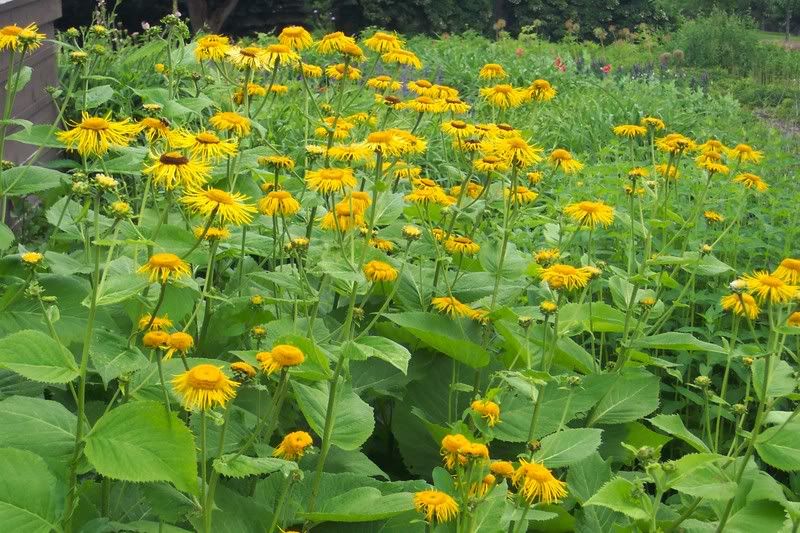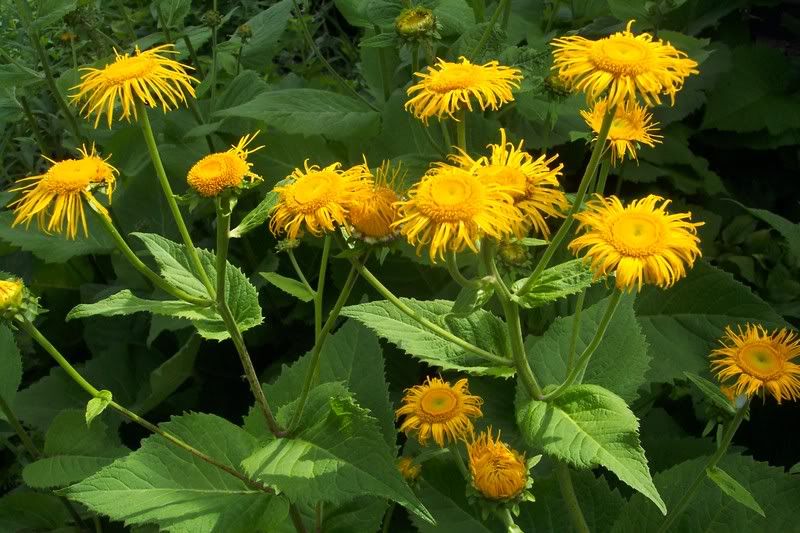While we were out hoeing the pumpkins a few days ago, I came across a familiar but unwelcome site… a cluster of tiny, hard objects on one of the leaves. I knew what it was immediately, we have had these before. It was a egg mass from a Squash Bug.
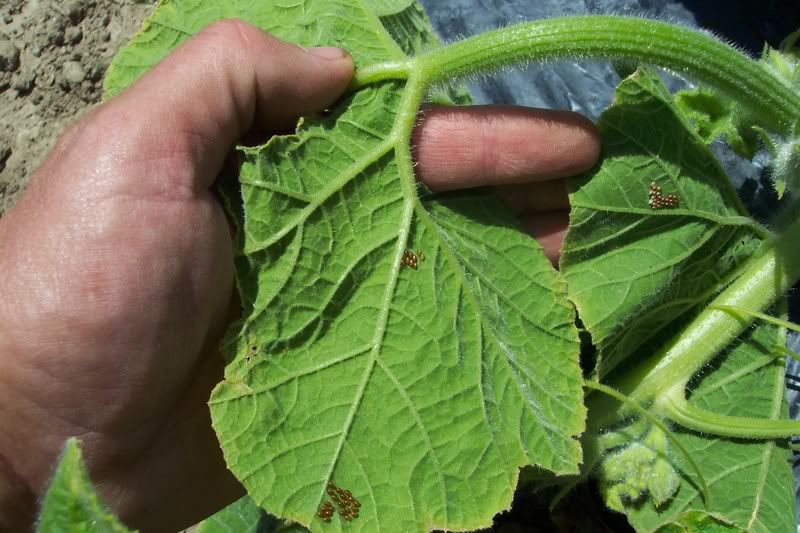
I told my helpers to be on the look out for them. Usually the eggs are found on the under side of a leaf.
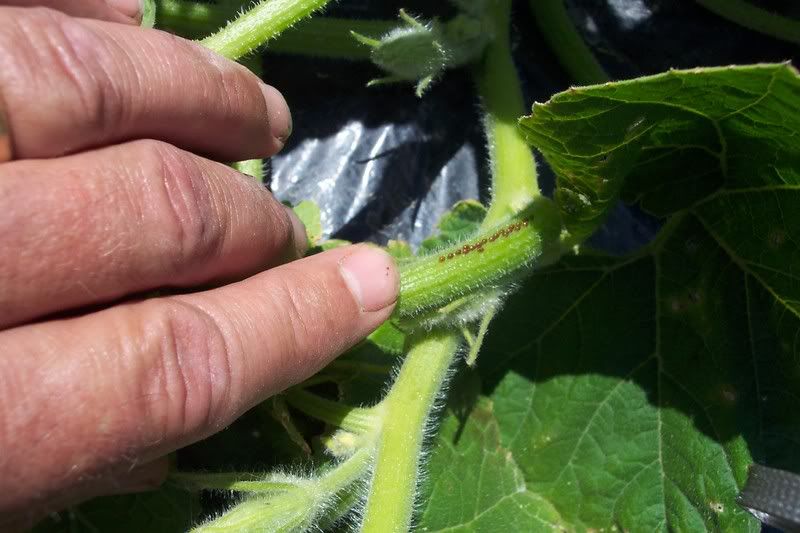
They can also be found on a stem or anywhere else on the plant.
Squash Bugs feed on all members of the Squash family of plants, pumpkins included.
I asked my helpers to count the number of egg mass as we set out to smash them by hand. I was curious about how many there were and thought that you might be interested as well.
We have three 75 foot rows of pumpkins planted into black plastic mulch. The first row had about 75 egg masses, the middle row had 45 egg masses, while the last row had 85 eggs masses. Each egg mass ranged from a dozen to over 25 individual eggs per clutch. Anyway you do the math, that would have been a lot of Squash Bugs feeding on our plants!
Our vines were about this long at the time of counting:
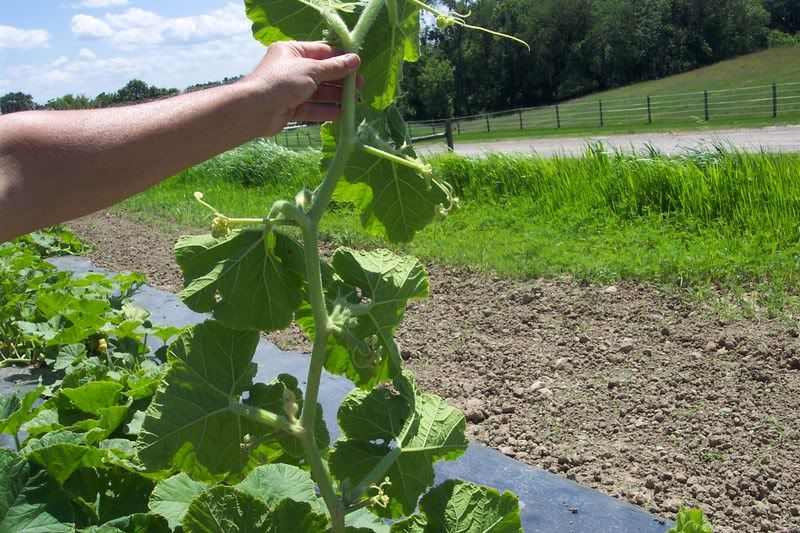
The easiest way to look for those bugs is to raise up the entire vine (or roll it over) and check each leaf. The eggs are very easy to spot.
The Squash Bugs feed by sucking the juice out of the plant. after which the leaves turn brittle and begin to turn brown. The number of bugs that would have hatched could have caused us a major drop in yield or possibly even a crop failure.
Here’s a portrait of Mama Bug:
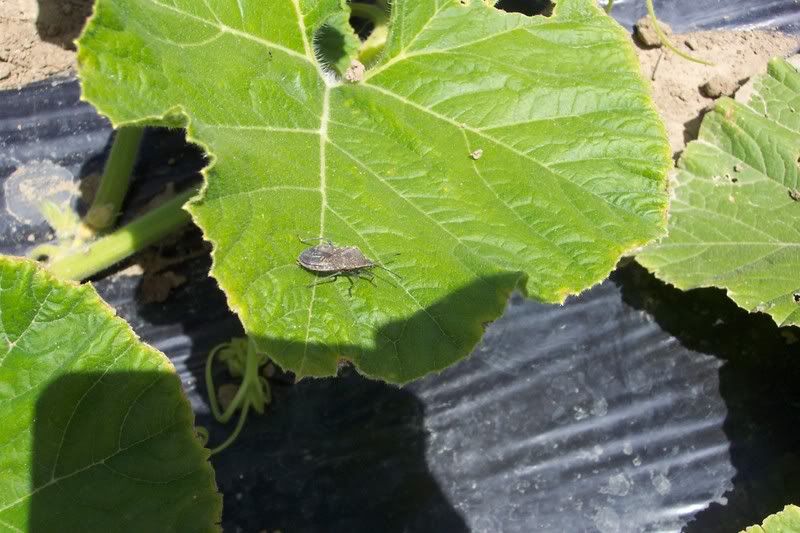
Smash her too while you’re at it ! This one oozed out an unusual iridescent blue color when crushed. I’ll spare you the gory photo ![]()
Squash Bugs like to hide from their enemies by crawling under debris. You can use this to your advantage by placing a board near your plant and leaving it over night. By morning, the bugs will have crawled under the board to hide (not knowing that it was you who placed it there). Lift up the board and dispatch any you find.
Our problem is that we have plastic mulch that they like to hide under and couldn’t care less about any board.
While they will do a lot of damage to your squash and pumpins, the good news is that they only breed once a year.
I’ll check the plants now and then to take care of any bugs we may have missed.
Bob
